How to Get Kids to Eat Vegetables: Fun & Stress-Free Tips for Picky Eaters
Why Kids Resist Vegetables: It’s Not Just Stubbornness
Before diving into solutions, it helps to understand why many children resist vegetables. This resistance isn’t simply stubbornness or a desire to test boundaries – there are legitimate developmental and biological reasons behind it.
Biological Taste Preferences
Children naturally have more taste buds than adults, making them more sensitive to bitter flavors found in many vegetables. This heightened sensitivity is actually an evolutionary protection mechanism that helped our ancestors avoid potentially poisonous plants. Many green vegetables contain compounds that taste bitter to children, explaining why broccoli and spinach often top the “most rejected” list.
Neophobia: Fear of New Foods
Around age 2, many children develop what experts call “food neophobia” – a natural wariness of new foods. This developmental phase coincides with increased mobility, possibly serving as a protective mechanism to prevent mobile toddlers from eating harmful substances. When your child refuses to try that piece of cucumber, they’re not being difficult – they’re following a natural instinct to be cautious about unfamiliar foods.
Texture Sensitivity
Many children have sensory sensitivities to food textures. The crunch of raw carrots or the softness of cooked zucchini might feel overwhelming to some kids. These texture preferences aren’t made up – they represent genuine sensory experiences that can make eating certain vegetables uncomfort.
Creative Ways to Introduce Vegetables
Now that we understand why vegetables might be met with resistance, let’s explore fun and creative ways to introduce them to your child’s diet. These approaches focus on making vegetables interesting, accessible, and enjoyable rather than something to be endured.
Make Food Fun with Creative Presentations
Children eat with their eyes first. Creating visually appealing presentations can transform ordinary vegetables into exciting foods worth trying.
 Try arranging vegetables into shapes, faces, or scenes. Cucumber “boats” with hummus and bell pepper “sails,” carrot “coins,” or broccoli “trees” in a mashed potato “forest” can spark imagination and interest.
Try arranging vegetables into shapes, faces, or scenes. Cucumber “boats” with hummus and bell pepper “sails,” carrot “coins,” or broccoli “trees” in a mashed potato “forest” can spark imagination and interest.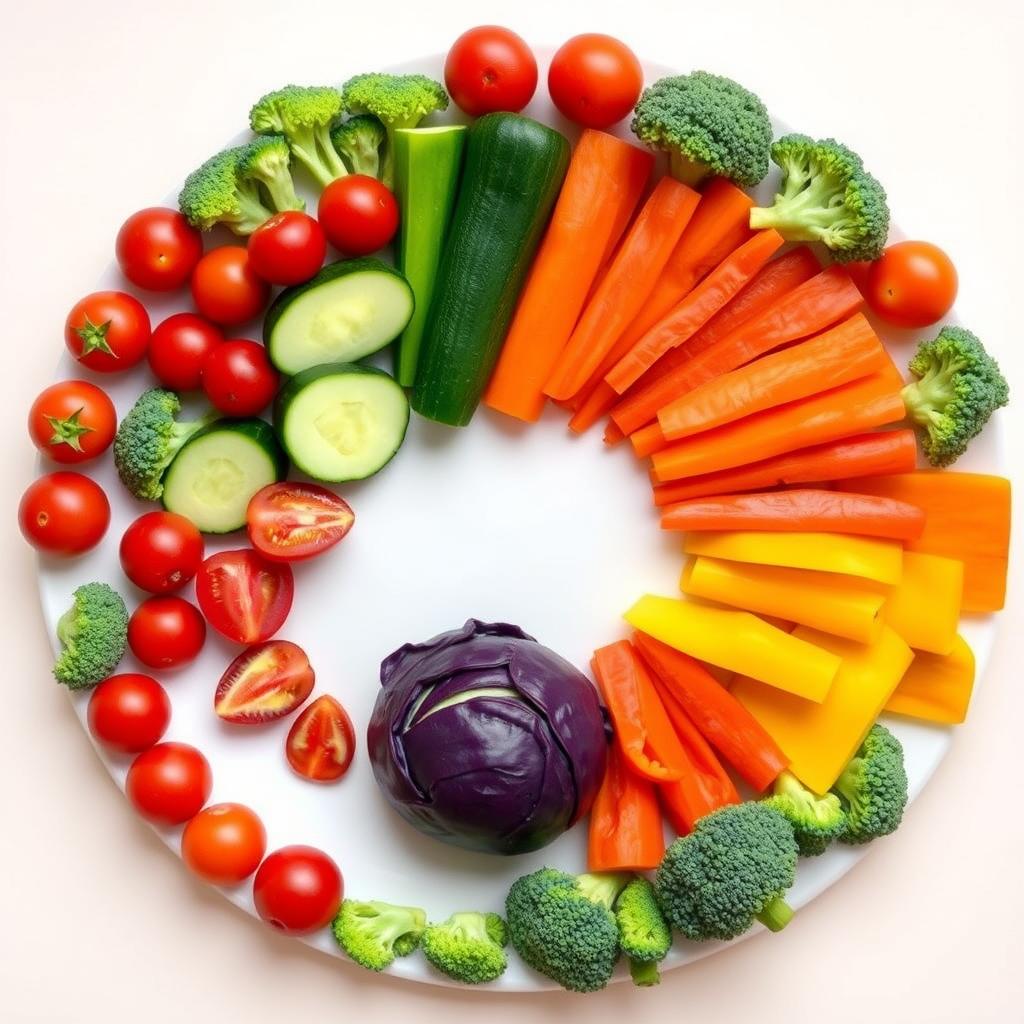 Create a “rainbow challenge” by arranging vegetables by color and encouraging your child to “eat a rainbow.” This not only makes the plate visually appealing but also introduces the concept of varied nutrition.
Create a “rainbow challenge” by arranging vegetables by color and encouraging your child to “eat a rainbow.” This not only makes the plate visually appealing but also introduces the concept of varied nutrition.Give Vegetables Fun Names
Research shows that children are more likely to eat foods with fun, engaging names. Instead of “broccoli,” try “dinosaur trees” or “mini forest.” Cherry tomatoes can become “power pops,” and carrots might be “x-ray vision sticks.” This simple naming trick can increase vegetable consumption by making familiar foods seem new and exciting.
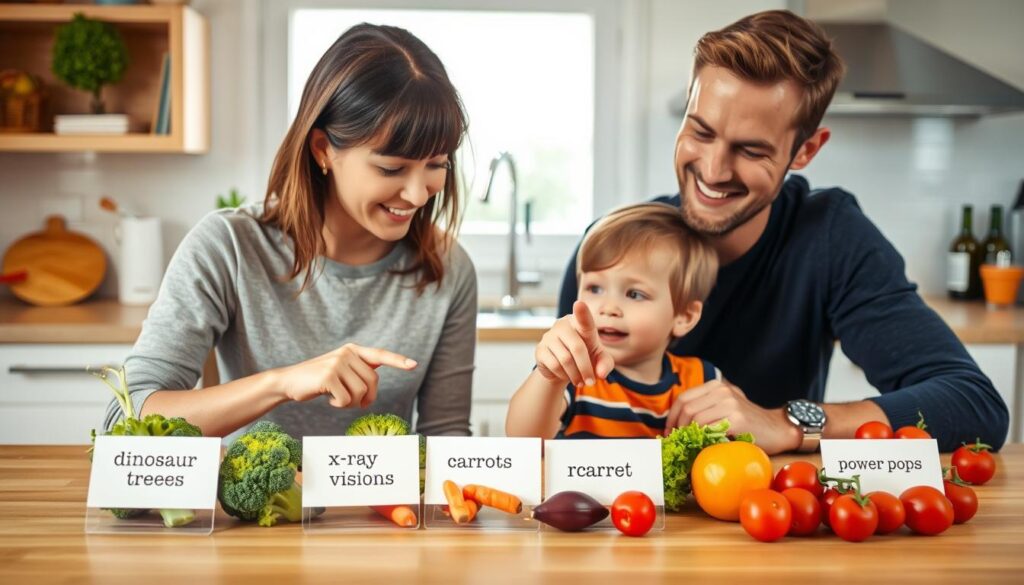
Involve Kids in Taste Tests
Turn trying new vegetables into an adventure by hosting “taste tests” where your child can rate different vegetables on cards with smiley faces. This gives them a sense of control and makes the experience interactive rather than forced. You might be surprised to discover preferences you didn’t know existed!
Sneaky (but Healthy) Techniques
While we want children to eventually recognize and enjoy vegetables in their natural form, sometimes a transitional approach can help increase nutrient intake while working on acceptance.
Blend Vegetables into Favorite Foods
Incorporating vegetables into foods your child already enjoys can be an effective strategy. However, it’s important to be honest about what’s in the food rather than being completely secretive. This approach helps increase vegetable intake while still building familiarity with these foods.
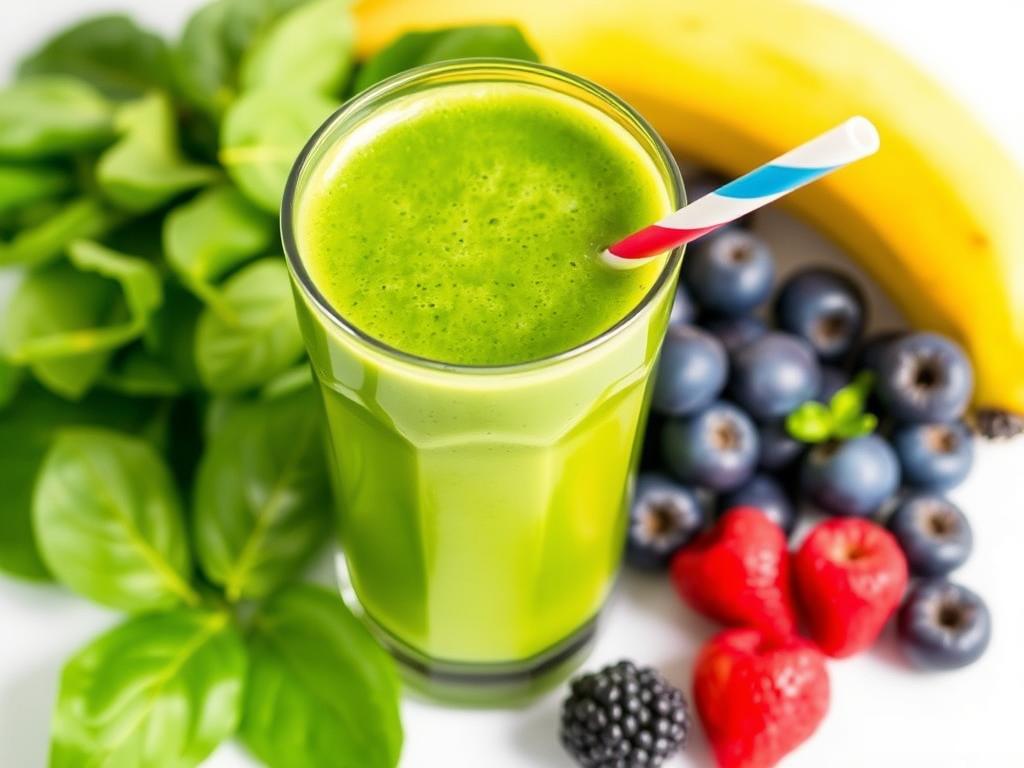 Smoothies are perfect for incorporating vegetables alongside fruit. A handful of spinach or kale in a fruit smoothie adds nutrition without significantly changing the taste. Let your child help add the greens and watch them disappear as they blend.
Smoothies are perfect for incorporating vegetables alongside fruit. A handful of spinach or kale in a fruit smoothie adds nutrition without significantly changing the taste. Let your child help add the greens and watch them disappear as they blend. Pasta sauce can hide a multitude of vegetables. Blend carrots, zucchini, or bell peppers into your tomato sauce for added nutrition. Over time, you can make the pieces larger and more visible as your child becomes accustomed to the flavors.
Pasta sauce can hide a multitude of vegetables. Blend carrots, zucchini, or bell peppers into your tomato sauce for added nutrition. Over time, you can make the pieces larger and more visible as your child becomes accustomed to the flavors.Vegetable-Boosted Baked Goods
Baked goods offer another opportunity to incorporate vegetables. Zucchini bread, carrot muffins, or spinach pancakes combine the familiar comfort of baked treats with added nutrition. Again, be transparent about the ingredients – “These are our special green pancakes with spinach that makes you strong!”
Important Note: While “hiding” vegetables can increase nutrient intake, it shouldn’t be your only strategy. Continue to offer visible vegetables alongside these modified dishes to build familiarity and eventual acceptance.
Making Vegetables Fun and Accessible
How we present vegetables can significantly impact whether children will try them. Creating positive associations with vegetables through fun presentations and easy access can make a big difference.
Create Dip Stations
Many children who resist plain vegetables will happily eat them when paired with a dip. Set up a “dip station” with options like hummus, yogurt-based ranch, guacamole, or even a small amount of ketchup. The interactive element makes eating vegetables more engaging.
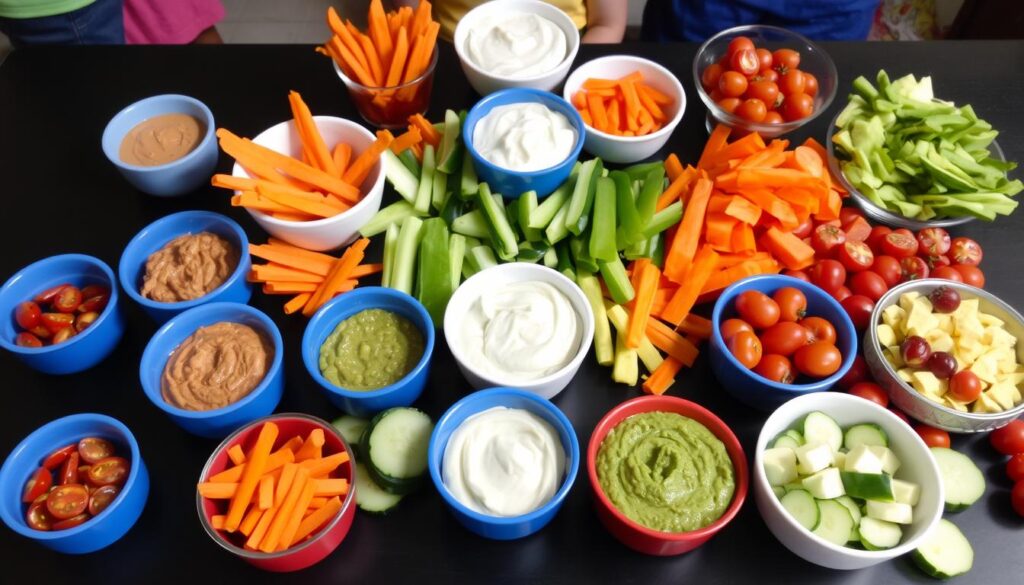
Use Fun Serving Tools
Special serving tools can make vegetables more appealing. Try colorful picks, small forks with character tops, or divided plates with fun designs. These simple additions can transform the vegetable-eating experience from ordinary to special.
Create Bento-Style Lunches
Bento-style lunch boxes with small compartments are perfect for offering vegetables in manageable, non-intimidating portions. The variety and presentation make vegetables seem like just another fun part of lunch rather than an obligation.
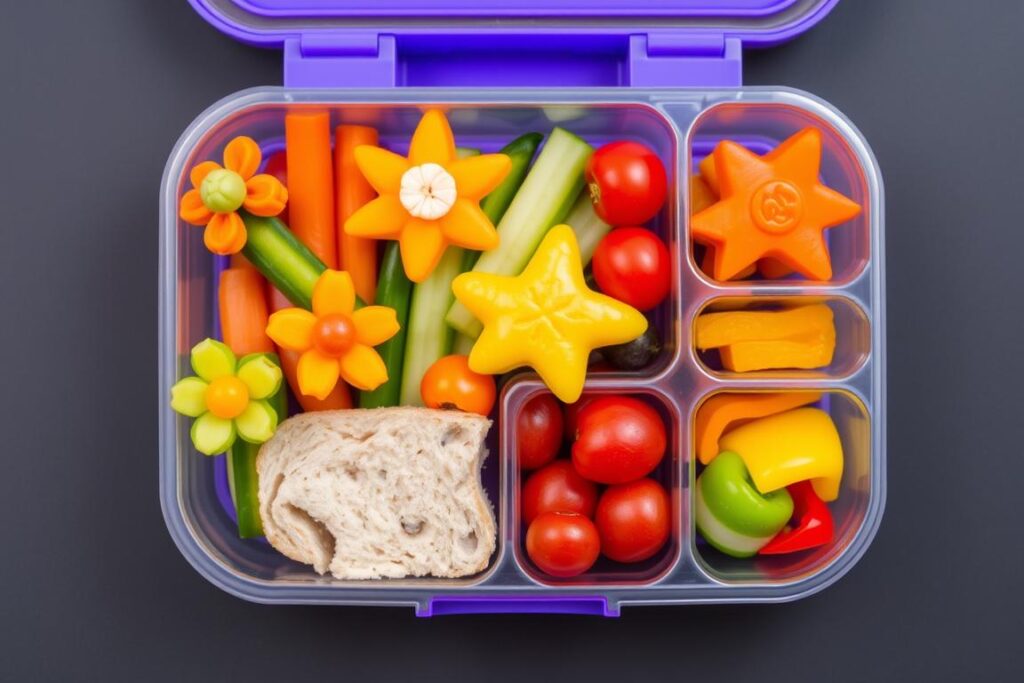
Offer Vegetables When Kids Are Hungriest
Strategic timing can increase vegetable acceptance. Offer raw vegetables as an appetizer when children are hungriest, such as while you’re preparing dinner. A small plate of cucumber rounds, bell pepper strips, or cherry tomatoes might be eagerly accepted when hunger is at its peak.
Creating a Positive Mealtime Environment
The atmosphere around food can significantly impact a child’s willingness to try new things. Creating a positive, pressure-free environment helps children develop a healthy relationship with all foods, including vegetables.
Avoid Pressure Tactics
Research consistently shows that pressuring children to eat certain foods backfires. Phrases like “just take three more bites” or “you can’t leave the table until you finish your vegetables” create negative associations with those foods. Instead, adopt a division of responsibility: you decide what foods to offer and when; your child decides whether to eat and how much.

“The goal isn’t to get your child to eat broccoli tonight. The goal is to raise an adult who has a healthy relationship with all foods, including vegetables.”
Model Healthy Eating
Children learn by watching. When they see you genuinely enjoying vegetables, they become more curious about them. Make positive comments about the vegetables you’re eating: “These roasted carrots are so sweet and delicious!” rather than “I’m eating my vegetables because I have to.”
Start with Tiny Portions
Large portions of unfamiliar foods can be overwhelming. Start with tiny, non-threatening amounts – even just a single pea or a tiny piece of bell pepper. This approach makes trying new vegetables seem manageable rather than daunting.

Celebrate Small Wins
Acknowledge progress without making too big a deal about it. A simple “You tried something new today!” acknowledges their effort without creating pressure for next time. Remember that touching, smelling, or licking a vegetable are all steps toward eventual acceptance – eating doesn’t have to be the only measure of success.
How to Involve Kids in Shopping and Cooking
Children who participate in food selection and preparation develop a sense of ownership and pride that makes them more likely to try the foods they’ve helped create.
Make Shopping an Adventure
Turn grocery shopping into an exploration by letting your child choose a new vegetable to try each week. For younger children, you might give them a choice between two options: “Should we try the purple cauliflower or the yellow squash this week?”

Garden Together
If space allows, growing even a single vegetable plant can transform a child’s relationship with that food. Cherry tomatoes, snap peas, and carrots are particularly rewarding for young gardeners. The pride of growing something from seed to plate is powerful motivation to at least try the results.
Assign Age-Appropriate Kitchen Tasks
Children as young as two can participate in meal preparation. Toddlers can wash vegetables or tear lettuce. Preschoolers can help mix and pour. School-age children can learn to chop with appropriate supervision. These experiences build confidence and connection with the foods being prepared.
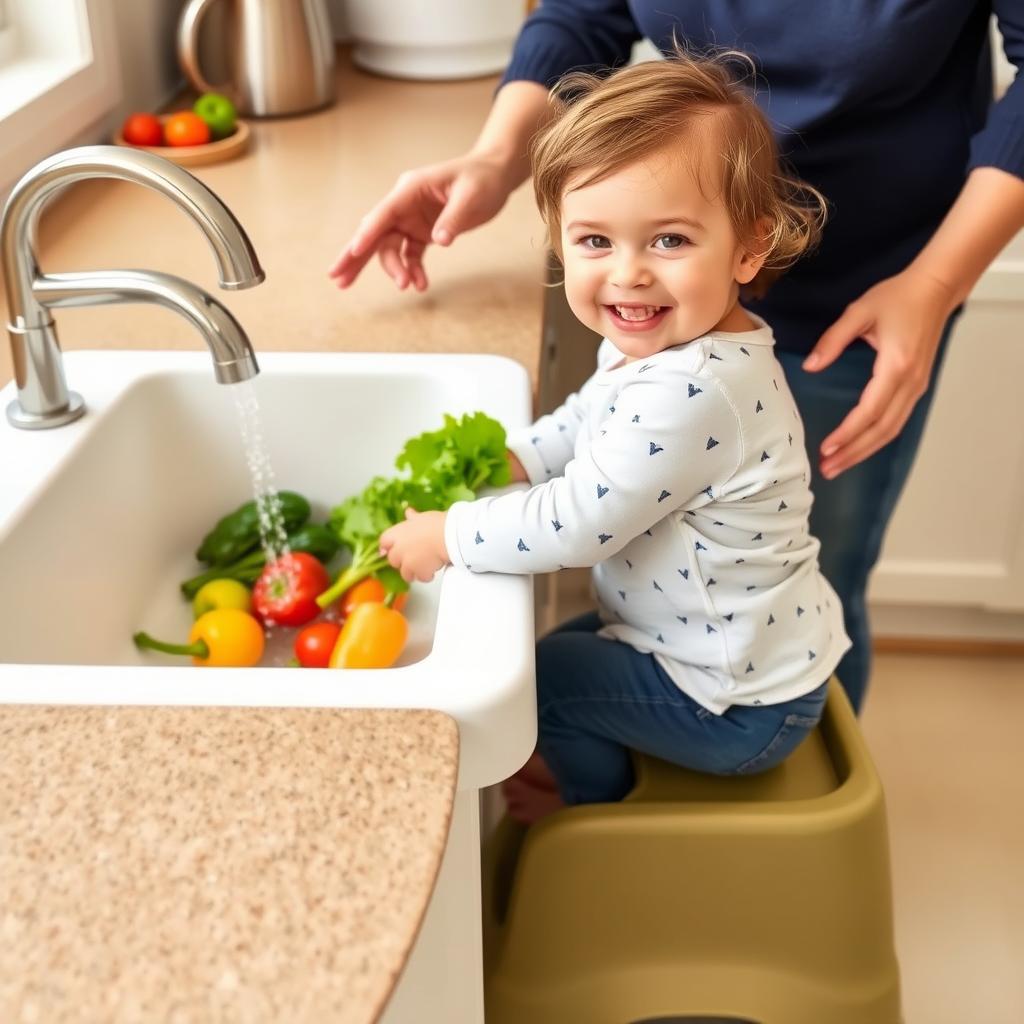 Ages 2-3: Washing vegetables, tearing lettuce leaves, stirring (with supervision)
Ages 2-3: Washing vegetables, tearing lettuce leaves, stirring (with supervision) Ages 7-8: Measuring ingredients, using a child-safe knife to cut soft vegetables, reading simple recipes
Ages 7-8: Measuring ingredients, using a child-safe knife to cut soft vegetables, reading simple recipesCreate a “Build Your Own” Meal Night
Taco bars, pizza-making stations, or build-your-own salad bowls give children control over what goes on their plate. Include a variety of vegetable options and let them decide which and how much to include. This autonomy often leads to more adventurous choices than when vegetables are simply served to them.
Real-World Success Stories from Parents
Sometimes the most helpful insights come from other parents who have successfully navigated the vegetable challenge. Here are some real-world strategies that worked for families like yours.

The Power of Naming
“My 4-year-old refused green beans until we renamed them ‘superhero sticks’ and said they help you jump higher. Now he asks for them by name! Sometimes a simple language change makes all the difference.”
– Maria, mother of two

Garden Transformation
“After three years of refusing anything green, my son planted a small container garden with snap peas. The day they were ready to harvest, he ate them straight off the plant! He’s still selective, but growing his own food was a game-changer.”
– James, father of one

Cooking Class Breakthrough
“My daughter’s school offered a cooking class where they made vegetable soup. She came home asking for carrots and celery! Something about the social experience of cooking with peers completely changed her perspective.”
– Aisha, mother of three
Common Mistakes to Avoid
Even with the best intentions, parents sometimes fall into counterproductive patterns when trying to encourage vegetable consumption. Being aware of these common pitfalls can help you avoid them.
Using Food as Reward or Punishment
“Eat your broccoli and you can have dessert” might seem like effective motivation, but this approach actually teaches children that vegetables are something to be endured rather than enjoyed. It also elevates dessert to a higher status. Instead, treat all foods as neutral – some nourish our bodies, others are just for enjoyment, and all have their place.

Giving Up Too Soon
Research shows it can take 8-15 exposures to a new food before a child accepts it. Many parents stop offering a rejected vegetable after just 2-3 attempts. Continued exposure in a pressure-free environment is key to eventual acceptance. Remember that “exposure” doesn’t always mean eating – seeing you eat the food, helping prepare it, or just having it on their plate counts too.
Showing Your Own Vegetable Aversions
Children are incredibly perceptive. If you wrinkle your nose at brussels sprouts or always pass on the salad, they notice. Even if you have your own vegetable dislikes, try to maintain a neutral or positive attitude about all foods in front of your children. Better yet, work on expanding your own palate alongside them – learning together can be powerful.
Making Separate “Kid Food”
Regularly preparing separate “kid-friendly” meals without vegetables reinforces the idea that vegetables are optional or not for children. While it’s fine to prepare foods in more appealing ways for children, aim to serve mostly the same components to everyone at the table.
Remember: The goal isn’t just getting vegetables into your child today – it’s helping them develop a lifelong healthy relationship with all foods. Sometimes taking the long view means less pressure and more patience in the moment.
Final Thoughts: Patience, Consistency, and Celebration
Helping children develop a taste for vegetables is a marathon, not a sprint. The strategies in this article aren’t quick fixes but rather approaches that build a foundation for lifelong healthy eating habits.
Celebrate Progress, Not Perfection
Remember that every small step counts. When your child licks a piece of cucumber, smells the broccoli, or helps wash the lettuce – these are all victories worth acknowledging. The path to vegetable acceptance isn’t linear, and what works one day might not work the next. That’s perfectly normal.

Keep the Long View in Mind
Your ultimate goal isn’t to win tonight’s vegetable battle – it’s to raise a child who grows into an adult with a healthy relationship with all foods. Sometimes that means backing off in the moment to preserve the positive atmosphere around food in general.
Trust Your Child’s Body
Children have natural hunger and fullness cues that we want to preserve. Forcing food disrupts these internal signals. Trust that with continued exposure and positive experiences, your child will eventually expand their palate in their own time and way.
Remember that food preferences continue to evolve throughout childhood and even into adulthood. The picky toddler who exists on nothing but pasta might become the adventurous teen who discovers a love for roasted brussels sprouts. With patience, creativity, and a positive approach, you’re setting the stage for that transformation – even when progress seems slow.
How many vegetables should my child eat each day?
Guidelines suggest children should eat 1-3 cups of vegetables daily, depending on their age. However, focus on gradual progress rather than strict amounts. Even a few bites consistently is a good start for very selective eaters.
Should I be concerned if my child only eats a few types of vegetables?
Having a few “accepted” vegetables is actually a great starting point. Build on these preferences by offering variations (if they like raw carrots, try roasted carrots with a little honey) or vegetables with similar properties (if they like corn, try peas).
When should I seek professional help for picky eating?
Consider consulting a pediatrician or feeding specialist if: your child’s growth is affected, they eat fewer than 20 different foods, they’re dropping accepted foods without adding new ones, or mealtime stress is significantly affecting family life.

Sharon Molly is a content creator in lifestyle, fashion, and travel, delivering style-savvy advice and destination insights to inspire confident living. With a background in digital media, she combines aesthetics with practical guidance for modern women on the go.




